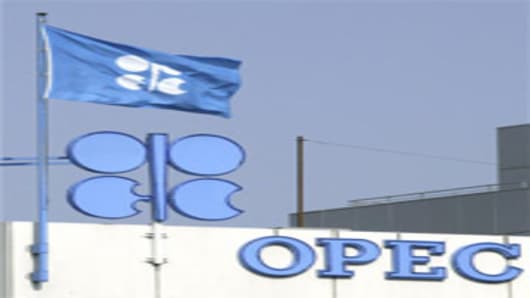The “old” politics of Opec, which split the cartel and marred its influence in the oil market of the 1990s, have made an unexpected return after a decade-long absence.
The acrimony that derailed Wednesday’s meeting has wider implications than the short-term failure to agree a production rise wanted by Saudi Arabia but opposed by price hawks Iran and Venezuela. It signals that Riyadh’s moderate views on what should be the prevailing oil price carry less weight in a group now more influenced by Tehran and Caracas.
“This is the worst division in Opec in more than a decade,” says David Kirsch, director of market intelligence at consultants PFC Energy and a veteran Opec watcher. “But the differences are not as wide as they were in the 1990s.”
For some, the return of the old politics is bullish.
The breakdown comes amid political tensions in the Middle East and north Africa, which have had a bearing on the meeting. The relationship between Saudi Arabia and Iran has soured because of Riyadh’s military support to Bahrain’s rulers. Libya is split after an uprising against Muammer Gaddafi. Qatar and the United Arab Emirates are supporting the Libyan rebels. As a result, oil prices are likely to rise more sharply than in the past at any sign of geopolitical trouble in the region.
The collapse of the meeting signals that a majority of the cartel sees oil prices above the $100-a-barrel mark as a new floor, rather than a ceiling.
While Venezuela and Iran have made clear their dislike for the US, their preference for higher prices has more to do with their domestic economies and the need to support galloping social spending.
Yet to describe the outcome as a defeat for Saudi Arabia could be misleading.
True, Ali Naimi, Saudi oil minister and Opec’s traditional de facto leader, has suffered a personal setback. Under his leadership, Opec had successfully navigated meetings in Madrid, The Hague and Riyadh in 1998 and 1999 that separated domestic politics from the business of managing the oil market.
Mr Naimi liked to say Opec was a “technocratic” group in which countries focused on oil supply and demand, rather than playing politics through oil prices. As a result, the influence of the cartel, which controls 40 per cent of the global oil supply, grew stronger.
But while that may no longer hold true – Mr Naimi said it was “one of the worst meetings we have ever had” as he left the Opec secretariat in Vienna – Saudi Arabia is likely to have the last word, on both prices and supplies, rather than Venezuela and Iran.
Even if bullish psychologically for the market, the disarray at the meeting has also in effect buried the production quota system that has governed the official output level at Opec since 1986. That gives Saudi Arabia a green light to produce as much oil as it likes. If Riyadh floods the market, it could bring prices substantially lower. If so, bullish sentiment could quickly turn bearish.
In a sense, it was Mr Naimi who triggered the breakdown after failing to obtain the production increase that Riyadh demanded. Rather than rolling over quota levels, Saudi Arabia forced a non-agreement that gives Mr Naimi a free hand to control the market.
Riyadh had already quietly increased its own production ahead of the meeting, moving above 9m barrels a day for the first time since 2008. Analysts and consultants say Saudi Arabia could be pumping as much as 10m b/d by the third quarter.
In this scenario, the oil market would probably receive as much oil as it would have if Opec had agreed to Mr Naimi’s attempt to lift production by 1.5 million b/d to 30.3 million b/d. Instead of each country providing its share of that higher quota, it is likely to be Saudi Arabia and its allies Kuwait, Qatar and the UAE that will now do so.
Mr Naimi was clear on that point when, in an unusual briefing after the meeting, he said the oil market would not “see any shortage”. Even so, Riyadh will have to tap heavily its spare production capacity to pump 10 million b/d or more, reducing the cushion that the oil market counts on to meet unexpected supply crises. Traders, therefore, may well demand a premium to take account of the extra risk.


